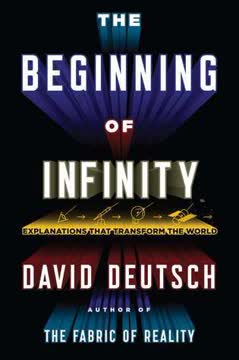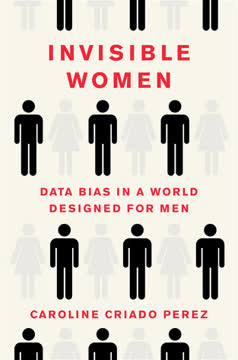Key Takeaways
1. Statistics are socially constructed, not objective facts
We think of statistics as facts that we discover, not as numbers we create.
Statistics reflect choices. Every statistic involves decisions about what to count and how to count it. These choices shape the resulting numbers and our understanding of social issues. For example:
- Defining "homelessness" impacts estimates:
- Only counting people on streets vs. including those in shelters
- Including or excluding people staying with friends/family
- Time frame: one night vs. any time in past year
Social context matters. Statistics don't exist in a vacuum - they're created and used by people with particular goals and perspectives. Key factors include:
- Who is producing the statistic and why
- How the media reports and frames numbers
- Which statistics gain traction and get repeated
- How different groups interpret and use the same figures
2. Bad statistics often stem from guessing and poor definitions
Certainly, activists' numbers aren't much good from the start, because they are based on nothing more than guesses or dubious data.
Guesstimates abound. When hard data is lacking, advocates often resort to educated guesses or ballpark figures. These tend to:
- Err on the side of exaggeration
- Use round numbers (e.g. "one million victims")
- Get repeated and treated as fact
Definitions are crucial. How a problem is defined determines what gets counted. Broad definitions lead to bigger numbers. For example, defining "child abuse" could include:
- Physical abuse only
- Physical and emotional abuse
- Neglect
- Witnessing domestic violence
The broader the definition, the larger the resulting statistic will be. Activists often prefer inclusive definitions to highlight the scale of problems they care about.
3. Mutant statistics arise from misunderstanding and manipulation
Bad statistics live on; they take on lives of their own.
Mangled meanings. Statistics often get distorted as they're repeated, like a game of telephone. Common transformations include:
- Confusing "having a condition" with "dying from it"
- Mistaking "new cases" for "total cases"
- Applying a statistic for one group to the whole population
Motivated misinterpretation. People may deliberately twist statistics to support their views. This can involve:
- Cherry-picking favorable numbers
- Using misleading comparisons
- Presenting estimates as definitive facts
- Ignoring important context or caveats
Once a mutant statistic is created, it often gets repeated without scrutiny, taking on a life of its own.
4. Inappropriate comparisons lead to misleading conclusions
The lesson should be clear: bad statistics live on; they survive and even thrive.
Apples to oranges. Comparing unlike things can produce distorted impressions. Common pitfalls include:
- Comparing different time periods without accounting for population growth
- Contrasting countries with different definitions or measurement systems
- Juxtaposing raw numbers for groups of very different sizes
Change over time. Comparing statistics from different eras is tricky because:
- Definitions and measurement methods evolve
- Social attitudes and reporting practices shift
- The underlying reality being measured may have changed
For instance, rising child abuse reports may reflect increased awareness and reporting rather than more actual abuse.
5. Competing interests fuel debates over social statistics
Statistics, then, can become weapons in political struggles over social problems and social policy.
Stakes shape statistics. Different groups have vested interests in particular numbers:
- Activists want big numbers to highlight problems
- Officials may prefer smaller figures showing progress
- Businesses push stats favorable to their industry
Stat wars erupt. When issues are contentious, competing sides often:
- Cherry-pick supportive statistics
- Attack opponents' numbers as flawed
- Produce dueling studies with different methods
- Frame the same data in contradictory ways
These battles reflect underlying disagreements about values and priorities, not just technical disputes over numbers.
6. Critical thinking is essential for evaluating statistical claims
The Critical attempt to evaluate numbers, to distinguish between good statistics and bad statistics.
Beyond face value. A critical approach involves asking questions like:
- How was this number produced?
- What's being counted and what's left out?
- Who created this statistic and why?
- What assumptions underlie the calculation?
- How does it compare to other estimates?
Balancing skepticism and utility. The goal isn't to dismiss all statistics, but to:
- Recognize limitations of all numbers
- Assess relative strengths and weaknesses
- Use statistics as tools, not magic facts
- Seek multiple sources and perspectives
Critical thinking allows us to navigate between naive acceptance and cynical rejection of statistical claims.
7. Good statistics require clear definitions, measures, and samples
Good statistics are based on clear, reasonable definitions.
Key elements of quality. Robust statistics typically involve:
- Precise, transparent definitions of what's being counted
- Valid, consistent measurement methods
- Representative samples of adequate size
- Clear explanations of limitations and margins of error
Red flags. Warning signs of potentially problematic statistics include:
- Vague or shifting definitions
- Unexplained methodological choices
- Convenience samples or tiny data sets
- Lack of information about how numbers were produced
- Implausibly precise or dramatically round figures
Good statistics don't just present a number, but explain how it was derived.
8. Social context shapes the creation and interpretation of statistics
Our numbers are undoubtedly good numbers, while our opponents' figures are questionable at best.
Beyond the numbers. Understanding statistics requires considering:
- Historical context (e.g. changing social norms)
- Institutional practices (e.g. how police classify crimes)
- Cultural assumptions (e.g. what counts as "poverty")
- Political climate (e.g. which issues get measured)
Motivated reasoning. People tend to:
- Accept statistics that confirm their views
- Scrutinize numbers that challenge their beliefs
- Interpret ambiguous data in ways that fit their perspective
Recognizing these tendencies in ourselves and others is crucial for fair evaluation of statistical claims.
9. Statistical literacy is crucial for informed citizenship
Being Critical requires more thought, but failing to adopt a Critical mind-set makes us powerless to evaluate what others tell us.
Ubiquitous numbers. Modern society is awash in statistics about:
- Social problems
- Economic trends
- Public opinion
- Government policies
- Health risks
Empowered engagement. Statistical literacy allows citizens to:
- Critically assess claims by media, politicians, and activists
- Understand the limitations of data-driven arguments
- Participate more effectively in public debates
- Make more informed personal and political choices
Developing these skills is an ongoing process, but essential for navigating our data-rich world.
Last updated:
FAQ
What's "Damned Lies and Statistics" about?
- Purpose of the book: "Damned Lies and Statistics" by Joel Best explores how statistics are often misused or misunderstood in discussions about social issues.
- Focus on manipulation: The book examines how statistics can be manipulated by media, politicians, and activists to promote specific agendas.
- Critical thinking: It encourages readers to think critically about the numbers they encounter and understand the social processes behind their creation.
Why should I read "Damned Lies and Statistics"?
- Awareness of manipulation: It helps readers become aware of how statistics can be used to mislead or manipulate public opinion.
- Critical evaluation skills: The book provides tools and strategies for critically evaluating statistical claims.
- Understanding social issues: It offers insights into how social problems are constructed and debated in society.
What are the key takeaways of "Damned Lies and Statistics"?
- Statistics are socially constructed: All statistics are created through choices about definitions, measurements, and samples.
- Common errors: The book identifies common errors in statistics, such as guessing, inappropriate comparisons, and mutant statistics.
- Critical approach: Readers are encouraged to adopt a critical approach to evaluating statistics, rather than being naive or cynical.
What are the best quotes from "Damned Lies and Statistics" and what do they mean?
- "There are lies, damned lies, and statistics." This quote, often attributed to Mark Twain, highlights the potential for statistics to be used misleadingly.
- "Bad statistics live on; they take on lives of their own." This emphasizes how incorrect statistics can persist and influence public perception.
- "Statistics are tools, used for particular purposes." This reminds readers that statistics are not neutral facts but are often used to support specific agendas.
How does Joel Best define "mutant statistics"?
- Definition: Mutant statistics are distorted versions of original figures, often resulting from misunderstandings or misinterpretations.
- Causes: They can arise from innumeracy, where people fail to grasp the meaning of numbers, or from deliberate manipulation.
- Impact: Mutant statistics can spread widely, influencing public opinion and policy based on incorrect information.
What is the "dark figure" in crime statistics?
- Definition: The "dark figure" refers to the proportion of crimes that go unreported and therefore do not appear in official statistics.
- Significance: It highlights the limitations of crime statistics, as they may underestimate the true extent of crime.
- Implications: Understanding the dark figure is crucial for accurately assessing social problems and formulating effective policies.
How does "Damned Lies and Statistics" address the issue of innumeracy?
- Definition: Innumeracy is the mathematical equivalent of illiteracy, where people struggle to understand basic numerical concepts.
- Consequences: Innumeracy can lead to the acceptance of flawed statistics and hinder critical evaluation of numerical claims.
- Solutions: The book advocates for improved education in statistical literacy to help people better understand and evaluate statistics.
What role do definitions play in creating statistics, according to Joel Best?
- Importance of definitions: Definitions determine what is counted and how a social problem is understood.
- Broad vs. narrow definitions: Broad definitions can inflate statistics by including more cases, while narrow definitions may exclude relevant cases.
- Impact on statistics: The choice of definition can significantly affect the size and interpretation of statistical estimates.
How does Joel Best suggest we evaluate the quality of statistics?
- Ask key questions: Consider who created the statistic, why it was created, and how it was created.
- Examine definitions and measurements: Ensure that definitions are clear and measurements are reasonable.
- Assess sampling methods: Check whether the sample is representative and whether the statistic is based on a good sample.
What are "stat wars" and how do they relate to social issues?
- Definition: Stat wars are public controversies over competing statistics, often reflecting underlying social or political conflicts.
- Role in debates: They highlight how different groups use statistics to support their interests and challenge opponents.
- Resolution: Understanding the basis of each statistic can help clarify the debate, but often the underlying social issue remains contentious.
How does "Damned Lies and Statistics" explain the use of statistics in media?
- Media's role: The media often report statistics because they seem factual and authoritative.
- Potential for distortion: Media coverage can contribute to the spread of mutant statistics if reporters do not critically evaluate the numbers.
- Public influence: The media's presentation of statistics can shape public perception and understanding of social issues.
What is the "critical approach" to statistics advocated by Joel Best?
- Balanced perspective: The critical approach involves neither blindly accepting nor cynically rejecting statistics.
- Thoughtful evaluation: It requires asking questions about the origins, definitions, measurements, and interpretations of statistics.
- Goal: The aim is to distinguish between good and bad statistics and to understand their implications for social issues.
Review Summary
Damned Lies and Statistics receives mixed reviews, with an average rating of 3.75/5. Many readers find it informative and eye-opening, praising its accessible approach to understanding and critically evaluating statistics. The book is lauded for its examples and emphasis on questioning the origin and purpose of statistics. Some readers note its relevance in today's data-driven world, especially during election seasons. However, a few criticize it for being repetitive or basic. Overall, most reviewers recommend it as a valuable guide for developing statistical literacy.
Similar Books






Download PDF
Download EPUB
.epub digital book format is ideal for reading ebooks on phones, tablets, and e-readers.




